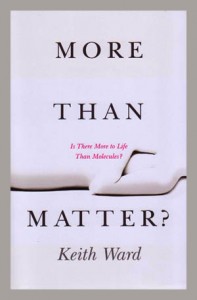This post is part of a series wherein I blog my way through studying for the doctoral certification exam in the Communication, Media, and Learning Technologies Design Program at Teachers College, Columbia University. Read the first post here.
Full disclosure: Amazon links in this post have my affiliate code built into them. If you follow one and purchase something, I’ll get a small commission. Thanks for supporting Learning, Faith & Media and my other work.
I’ve been giving a lot of thought to how much attention I should to give in my research to … let’s call it the explicitly theological.
Obviously, my work is going to explore methods for effective religious education / faith formation / spiritual learning in the twenty-first century. And obviously, I care that other religious educators and ministry leaders generally find the work to be valuable from a pedagogical and theological perspective.
But I’m also not expecting faculty members who aren’t religious educators or even necessarily religious to evaluate the theological appropriateness—let alone value—of the work I’m putting forward. I realize I’m hardly the first religious person to be in this situation at a secular institution, and I realize I don’t need to fully tackle the puzzle now. But I want to say a few words in this post for a way I might theologically frame the work.
Some of that framing can come from what we might call “a secular case for a religious/theological need.” For example, anyone can look at some of the thinkers in previous posts (e.g., Putnam, Drescher, Campbell, and Taylor—A Secular Age, though, rather than The Language Animal) and understand that religious educators need new ways of understanding and supporting their work.
My advisor doesn’t need to personally hold Christian convictions to say, “Huh, yeah, these data and stories obviously show that your site of research and teaching is changing a lot. Better take that into account.”
But I do think it’s worth me citing enough explicitly theological work to convince a curious if affiliatively disinterested reader that developing a methodology for incorporating multimodal storytelling into spiritual learning is a sensible idea. That argument should refer to terms that people deciding whether to support, fund, or implement such work (e.g., religious leaders) are likely to care about.
At the advice of the wonderful Mary Hess, one source I’ve dived right into is Matthias Scharer and Bernd Jochen Hilberath’s The Practice of Communicative Theology: An Introduction to a New Theological Culture.
Unfortunately, a lot of the support work for this impressive volume is in German and hasn’t been translated. Thankfully, I studied German for six years and have kept it up by being married to one. Don’t get me wrong—reading German theology would be pretty slow going for me; the only language requirement in my doctoral program is Java or JavaScript.
Still, it kind of makes sense that the kind of theology I need to support my work would come out of Europe, where the trends toward religious unaffiliation and outright secularization are way more advanced.*
Scharer & Hilberath take everyday experience seriously as a site of legitimate theological reflection in a way that too few strands of American theology† do:
Theology springs from the consciousness of and the reflection on one’s own lived faith … in the interest both of internal clarity and of making this faith plausible to others … In denouncing [the] status quo, theology needs to demonstrate to itself that what is at stake here is not only something that affects the mere application of theology … but something that goes to its very heart; Christian theology fails itself if it does not remain oriented to the lived faith of the church as the community of believing subjects. (p. 15)
For Scharer & Hilberath, “theology is not ‘some thing’ that then is to be communicated; rather communication is the central content of theology” (p. 13, emphasis theirs). The act of communicating is both what God does to reach out to people and the world, what we do (or choose not to do) in response, and everything in between. This notion corresponds well with the view of communication scholars like Carey (maybe also Pauline Cheong writing about churches and their leaders), who believe we overstress the transmission understanding of communication and understress the ritual dimension.
So from Carey:
[The ritual view of communication] sees the original or highest manifestation of communication not in the transmission of intelligent information but in the construction and maintenance of an ordered, meaningful cultural world that can serve as a control and container for human action … not to alter attitudes or change minds but to represent an underlying order of things, not to perform functions but to manifest an ongoing and fragile social process. (p. 5)
And from Scharer & Hilberath, quoting Peter Hünermann:
Among the many kinds of communicative actions are a few that are constitutive for a particular group. In and through the performance of these actions the group comes into being and preserves itself. Without these communicative actions there would be no group. These constitutive actions become metaphors of living together … Only in an ever-renewed acting out of this metaphor of life does it continue to exist. (p. 17)
Thus, for Scharer & Hilberath, it’s the ongoing dialogue (remember Bakhtin?) of the community of faith that actually constitutes the theolog(ies) of the church(es).‡ That means they advocate “doing theology” via processes that intentionally structure expression and conversation for maximum empathy, respect, understanding, etc.
The method they commend is called Theme-Centered Interaction, developed by Ruth Cohen. It’s basically a group process methodology used in therapeutic and other community working/learning settings.
I don’t think it’s probably the best use of my time with the Cert Exam at t-minus 11 days to do a deep dive into TCI. But it seems pretty clear that it has some values and methods in common with Digital Storytelling, which is also a pretty heavily programed group experience aimed at identity development through self-expression and attentiveness to others.
But the bigger point here is that Scharer & Hilberath conceive of this kind of communicative theological process/reflection—which is a sort of sacramental encapsulation of the churches’ bigger conversations with themselves, each other, and the world—as a venue for “participating and cooperating theologians”:
Only suitable communication procedures, by which we mean those that deny any inherent hierarchy between professional theologians and practitioners, will alter practice in the long run. These are processes of communication that draw on the skills of everyone, where expertise remote from real life has no place, where people cooperate in striving to find a theological practice that answers the needs of the community. (p. 22-23)
If that’s sounding like a set of theological values that resonate strongly with the convictions of participatory research (and of course draw from the well of critical Latin American thinking that educators access via Pedagogy of the Oppressed and theologians access via A Theology of Liberation), well, you’re getting why I’m grateful once again to the wise and generous Mary Hess for putting me on this promising path.
I’m excited to continue with this theological geek-out after Certs.
* I get that the U.S. and Europe are apples and oranges and that representing the Europe as “further along” a monolithic trend isn’t quite right, but cut me some slack for the time being.
† I’m thinking of theology as something like “the churches’ reflection on their own life together,” as opposed to more sociological works like McGuire’s Lived Religion and Ammerman’s Sacred Stories, Spiritual Tribes, and of course Drescher.
‡ These guys are delightfully pluralistic for Roman Catholic theologians. Though again: Europeans.


